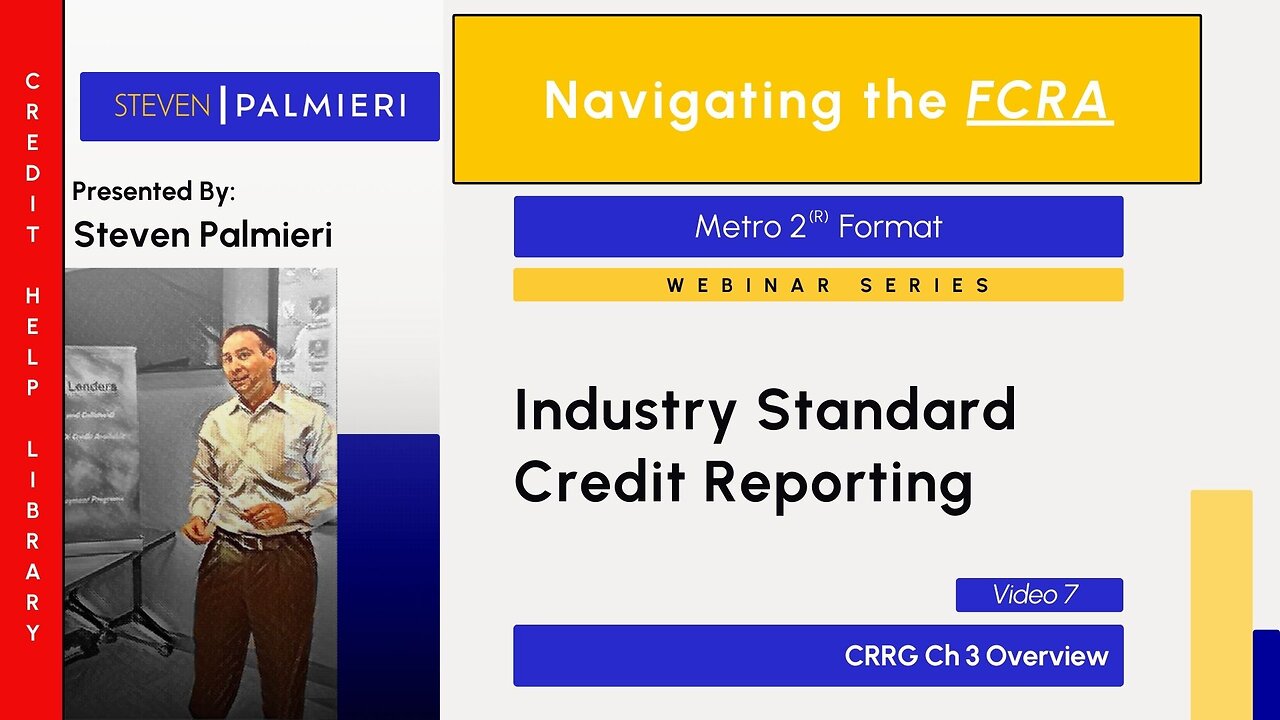Premium Only Content

Ch 3 Overview
The video provides an overview of Chapter 3 of the Metro 2 Credit Reporting Resource Guide, detailing the Metro 2 format as a data standard and its practical use for readers aiming to accurately read credit reports, identify errors, and draft dispute letters to consumer reporting agencies (CRAs). Chapter 3 is divided into four sections: business requirements, Metro 2 training, programming standards, and production tips, with a focus on how furnishers (e.g., Capital One) report data to CRAs.
The "Business Requirements" section explains why Metro 2 is beneficial for furnishers, beyond being an industry standard mandated by credit bureaus. It ties Metro 2 to the FCRA’s "maximum possible accuracy" requirement, stating that it provides a single, standardized computer layout for reporting accurate, complete, and timely data monthly. This consistency should ensure identical data across all bureaus (Equifax, Experian, TransUnion), making discrepancies between reports a clear basis for disputes. Metro 2 supports compliance with federal and state laws, covering account-level (e.g., payment status) and consumer-level (e.g., name, address) data, including fields like date of first delinquency, account type, and co-borrower details (J1/J2 segments).
The "Programming Standards" section notes two data transfer formats—character and packed—emphasizing that deviations compromise data integrity, a point readers can use to challenge inaccurate reporting. "Production Tips" guide furnishers on entering data for maximum accuracy, while "Record Layouts" outline data segments (e.g., base segment for primary borrower, K1 for original creditor, J1/J2 for co-borrowers) and specify required fields. Charts in this section list data fields, indicating whether they are mandatory or applicable, helping readers identify incomplete reporting (e.g., missing monthly updates for required fields like payment history).
For readers, Chapter 3 equips them to compare credit report data against Metro 2’s format. By cross-referencing report fields with the chapter’s charts, they can spot missing or inconsistent data—such as unreported required fields or discrepancies across bureaus—and use these findings to craft dispute letters, citing Metro 2 as evidence of noncompliance with the industry standard.
-
 8:25
8:25
Hollywood Exposed
12 hours agoRob Schneider DESTROYS De Niro After His Anti-Trump Meltdown
3.42K15 -
 1:43
1:43
GreenMan Studio
14 hours agoWEAK MEN W/Greenman Reports
2.63K3 -
 LIVE
LIVE
BEK TV
1 day agoTrent Loos in the Morning - 11/28/2025
113 watching -
 20:39
20:39
Forrest Galante
12 hours agoCatching A Giant Crab For Food With Bare Hands
115K28 -
 26:01
26:01
MetatronHistory
4 days agoThe REAL History of Pompeei
11.6K3 -
 15:42
15:42
Nikko Ortiz
1 day agoPublic Freakouts Caught On Camera...
117K36 -
 21:57
21:57
GritsGG
17 hours agoHigh Kill Quad Dub & Win Streaking! Most Winning CoD Player of All Time!
12.1K -
 5:44
5:44
SpartakusLIVE
20 hours agoARC BOUNTY HUNTER #arcraiders
19.9K2 -
 15:50
15:50
MetatronCore
2 days agoMy Statement on Charlie Kirk's Shooting
14.9K8 -
 LIVE
LIVE
Lofi Girl
2 years agoSynthwave Radio 🌌 - beats to chill/game to
683 watching